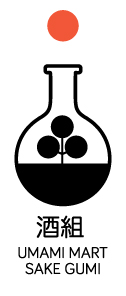 April sakes ship today for Sake Gumi, our monthly sake subscription club. If you like what's on deck here, you should join!
April sakes ship today for Sake Gumi, our monthly sake subscription club. If you like what's on deck here, you should join!
To celebrate the start of rice-planting season in April, we are highlighting the most popular sake rice
Yamada Nishiki. Why is it the most popular rice for sake brewing? Because of its ability to absorb water and dissolve easily -- allowing for consistent and even fermentation. Yamada Nishiki rice was first created in Hyogo Prefecture (just west of Kyoto) in 1923 by breeding two types of rice,
Yamadaho and
Tankanwataribune. Since then, sake makers have taken diligent notes on brewing with Yamada Nishiki, making it the most well-documented sake rice strain. All of this data has made Yamada Nishiki one of the most fool-proof rice strains for brewing sake.
How does sake brewed with Yamada Nishiki taste? Brewers use Yamada Nishiki to create sakes that have a subtle roundness with fruity and floral characteristics. Because of its ability to express fruity and floral aromas, Yamada Nishiki is often used for making ginjos and daiginjos (sake types that use highly polished rice grains).
That said, there are many factors in the sake-brewing process that affect the flavor of sake over the rice that is used. The main factor in determining a sake’s profile is the seimaibuai or the percentage of the rice grain that remains after polishing. For example, if a sake has a seimaibuai of 70% it will most likely taste more rustic and full-bodied than a sake with a seimaibuai of 50% which will tend to taste fruitier. While all the sakes this month are brewed using 100% Yamada Nishiki rice, the resulting sakes range from very floral (Mu Junmai Daiginjo with a 50% seimaibuai) to rich and nutty (Mizuho Kuromatsu Kenbishi Yamahai Junmai with a 70% seimaibuai). The common thread is that they all have a smooth and soft finish, thanks to the Yamada Nishiki rice.
Kanpai,
Yoko
LEVEL 1: Introductory Membership (Two 300ml bottles)
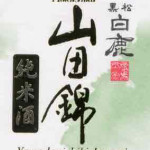 Hakushika Yamadanishiki Junmai
Hakushika Yamadanishiki Junmai
Tatsuuma-Honke Brewing (Hyogo, Japan)
Seimaibuai: 70%
SMV: +1
To drive this month’s theme home, we chose a sake that’s actually named “Yamadanishiki.” This brew is made by Hakushika, one of Hyogo’s oldest breweries is a soft-as-clouds junmai that delivers mellow wafts of butterscotch. A rich mouthfeel (typical of junmais) makes this sake ideal for pairing with carne asada or a pastrami sandwich. Try at room temperature or slightly warm.
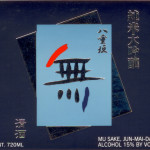 Mu Junmai Daiginjo
Mu Junmai Daiginjo
Yaegaki Brewery (Hyogo, Japan)
Seimaibuai: 50%
SMV: +1
Here is a great example of a soft, well-balanced, smooth daiginjo using highly polished Yamada Nishiki rice. This fruity brew starts with a blast of cherries on the nose and tastes refreshing and mild. This sake (like the above) is brewed in Hyogo Prefecture, the birthplace of Yamada Nishiki rice. Extra credit: Mu means “nothing” referring to its clean, mild taste. Try cold or at room temperature with oysters or seafood vongole!
LEVEL 2: Premium Membership (Two 720ml bottles)
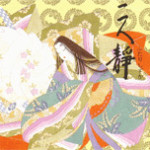 Futarishizuka
“Two Serenities” Junmai
Futarishizuka
“Two Serenities” Junmai
Toukun Shuzo (Chiba, Japan)
Seimaibuai: 70%
SMV: +1
This junmai has hints of vanilla on the nose which is the roundness that many sakes made with Yamada Nishiki tend to exhibit. An assertive crisp tail sets itself apart from other junmais that tend to be more viscous and sticky. Try this light junmai chilled alongside ceviche or sashimi.
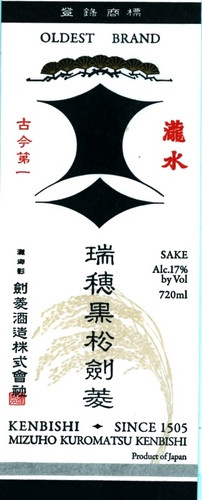 Mizuho Kuromatsu Kenbishi Yamahai Junmai
Mizuho Kuromatsu Kenbishi Yamahai Junmai
Kenbishi Shuzo (Hyogo, Japan)
Seimaibuai: 70%
SMV: +0.5
This rich and hearty brew shares some characteristics with single malt whiskies with notes of caramel, vanilla and roasted nuts. To appreciate the spectrum of aromas, try sipping this sake in a rocks glass chilled. Unlike most brews using Yamada Nishiki rice, this brew is dark and moody in sentiment, and best enjoyed with poultry or smoked meats.
 April sakes ship today for Sake Gumi, our monthly sake subscription club. If you like what's on deck here, you should join!
To celebrate the start of rice-planting season in April, we are highlighting the most popular sake rice Yamada Nishiki. Why is it the most popular rice for sake brewing? Because of its ability to absorb water and dissolve easily -- allowing for consistent and even fermentation. Yamada Nishiki rice was first created in Hyogo Prefecture (just west of Kyoto) in 1923 by breeding two types of rice, Yamadaho and Tankanwataribune. Since then, sake makers have taken diligent notes on brewing with Yamada Nishiki, making it the most well-documented sake rice strain. All of this data has made Yamada Nishiki one of the most fool-proof rice strains for brewing sake.
How does sake brewed with Yamada Nishiki taste? Brewers use Yamada Nishiki to create sakes that have a subtle roundness with fruity and floral characteristics. Because of its ability to express fruity and floral aromas, Yamada Nishiki is often used for making ginjos and daiginjos (sake types that use highly polished rice grains).
That said, there are many factors in the sake-brewing process that affect the flavor of sake over the rice that is used. The main factor in determining a sake’s profile is the seimaibuai or the percentage of the rice grain that remains after polishing. For example, if a sake has a seimaibuai of 70% it will most likely taste more rustic and full-bodied than a sake with a seimaibuai of 50% which will tend to taste fruitier. While all the sakes this month are brewed using 100% Yamada Nishiki rice, the resulting sakes range from very floral (Mu Junmai Daiginjo with a 50% seimaibuai) to rich and nutty (Mizuho Kuromatsu Kenbishi Yamahai Junmai with a 70% seimaibuai). The common thread is that they all have a smooth and soft finish, thanks to the Yamada Nishiki rice.
Kanpai,
Yoko
LEVEL 1: Introductory Membership (Two 300ml bottles)
April sakes ship today for Sake Gumi, our monthly sake subscription club. If you like what's on deck here, you should join!
To celebrate the start of rice-planting season in April, we are highlighting the most popular sake rice Yamada Nishiki. Why is it the most popular rice for sake brewing? Because of its ability to absorb water and dissolve easily -- allowing for consistent and even fermentation. Yamada Nishiki rice was first created in Hyogo Prefecture (just west of Kyoto) in 1923 by breeding two types of rice, Yamadaho and Tankanwataribune. Since then, sake makers have taken diligent notes on brewing with Yamada Nishiki, making it the most well-documented sake rice strain. All of this data has made Yamada Nishiki one of the most fool-proof rice strains for brewing sake.
How does sake brewed with Yamada Nishiki taste? Brewers use Yamada Nishiki to create sakes that have a subtle roundness with fruity and floral characteristics. Because of its ability to express fruity and floral aromas, Yamada Nishiki is often used for making ginjos and daiginjos (sake types that use highly polished rice grains).
That said, there are many factors in the sake-brewing process that affect the flavor of sake over the rice that is used. The main factor in determining a sake’s profile is the seimaibuai or the percentage of the rice grain that remains after polishing. For example, if a sake has a seimaibuai of 70% it will most likely taste more rustic and full-bodied than a sake with a seimaibuai of 50% which will tend to taste fruitier. While all the sakes this month are brewed using 100% Yamada Nishiki rice, the resulting sakes range from very floral (Mu Junmai Daiginjo with a 50% seimaibuai) to rich and nutty (Mizuho Kuromatsu Kenbishi Yamahai Junmai with a 70% seimaibuai). The common thread is that they all have a smooth and soft finish, thanks to the Yamada Nishiki rice.
Kanpai,
Yoko
LEVEL 1: Introductory Membership (Two 300ml bottles)
 Hakushika Yamadanishiki Junmai
Tatsuuma-Honke Brewing (Hyogo, Japan)
Seimaibuai: 70%
SMV: +1
To drive this month’s theme home, we chose a sake that’s actually named “Yamadanishiki.” This brew is made by Hakushika, one of Hyogo’s oldest breweries is a soft-as-clouds junmai that delivers mellow wafts of butterscotch. A rich mouthfeel (typical of junmais) makes this sake ideal for pairing with carne asada or a pastrami sandwich. Try at room temperature or slightly warm.
Hakushika Yamadanishiki Junmai
Tatsuuma-Honke Brewing (Hyogo, Japan)
Seimaibuai: 70%
SMV: +1
To drive this month’s theme home, we chose a sake that’s actually named “Yamadanishiki.” This brew is made by Hakushika, one of Hyogo’s oldest breweries is a soft-as-clouds junmai that delivers mellow wafts of butterscotch. A rich mouthfeel (typical of junmais) makes this sake ideal for pairing with carne asada or a pastrami sandwich. Try at room temperature or slightly warm.
 Mu Junmai Daiginjo
Yaegaki Brewery (Hyogo, Japan)
Seimaibuai: 50%
SMV: +1
Here is a great example of a soft, well-balanced, smooth daiginjo using highly polished Yamada Nishiki rice. This fruity brew starts with a blast of cherries on the nose and tastes refreshing and mild. This sake (like the above) is brewed in Hyogo Prefecture, the birthplace of Yamada Nishiki rice. Extra credit: Mu means “nothing” referring to its clean, mild taste. Try cold or at room temperature with oysters or seafood vongole!
LEVEL 2: Premium Membership (Two 720ml bottles)
Mu Junmai Daiginjo
Yaegaki Brewery (Hyogo, Japan)
Seimaibuai: 50%
SMV: +1
Here is a great example of a soft, well-balanced, smooth daiginjo using highly polished Yamada Nishiki rice. This fruity brew starts with a blast of cherries on the nose and tastes refreshing and mild. This sake (like the above) is brewed in Hyogo Prefecture, the birthplace of Yamada Nishiki rice. Extra credit: Mu means “nothing” referring to its clean, mild taste. Try cold or at room temperature with oysters or seafood vongole!
LEVEL 2: Premium Membership (Two 720ml bottles)
 Futarishizuka
“Two Serenities” Junmai
Toukun Shuzo (Chiba, Japan)
Seimaibuai: 70%
SMV: +1
This junmai has hints of vanilla on the nose which is the roundness that many sakes made with Yamada Nishiki tend to exhibit. An assertive crisp tail sets itself apart from other junmais that tend to be more viscous and sticky. Try this light junmai chilled alongside ceviche or sashimi.
Futarishizuka
“Two Serenities” Junmai
Toukun Shuzo (Chiba, Japan)
Seimaibuai: 70%
SMV: +1
This junmai has hints of vanilla on the nose which is the roundness that many sakes made with Yamada Nishiki tend to exhibit. An assertive crisp tail sets itself apart from other junmais that tend to be more viscous and sticky. Try this light junmai chilled alongside ceviche or sashimi.
 Mizuho Kuromatsu Kenbishi Yamahai Junmai
Kenbishi Shuzo (Hyogo, Japan)
Seimaibuai: 70%
SMV: +0.5
This rich and hearty brew shares some characteristics with single malt whiskies with notes of caramel, vanilla and roasted nuts. To appreciate the spectrum of aromas, try sipping this sake in a rocks glass chilled. Unlike most brews using Yamada Nishiki rice, this brew is dark and moody in sentiment, and best enjoyed with poultry or smoked meats.
Mizuho Kuromatsu Kenbishi Yamahai Junmai
Kenbishi Shuzo (Hyogo, Japan)
Seimaibuai: 70%
SMV: +0.5
This rich and hearty brew shares some characteristics with single malt whiskies with notes of caramel, vanilla and roasted nuts. To appreciate the spectrum of aromas, try sipping this sake in a rocks glass chilled. Unlike most brews using Yamada Nishiki rice, this brew is dark and moody in sentiment, and best enjoyed with poultry or smoked meats.


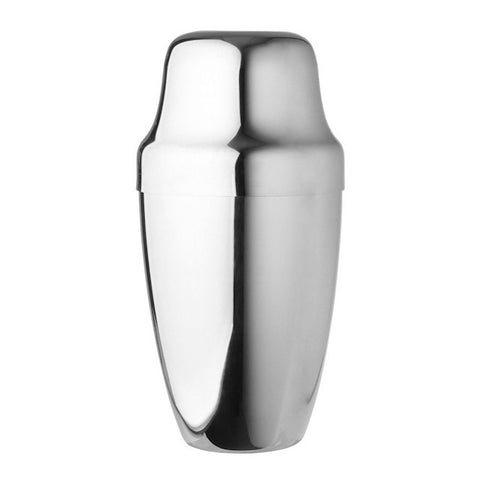

Comments (1)
I have a good idea for the next sake gumi you should the sake Brewery that’s featured in the birth of sake